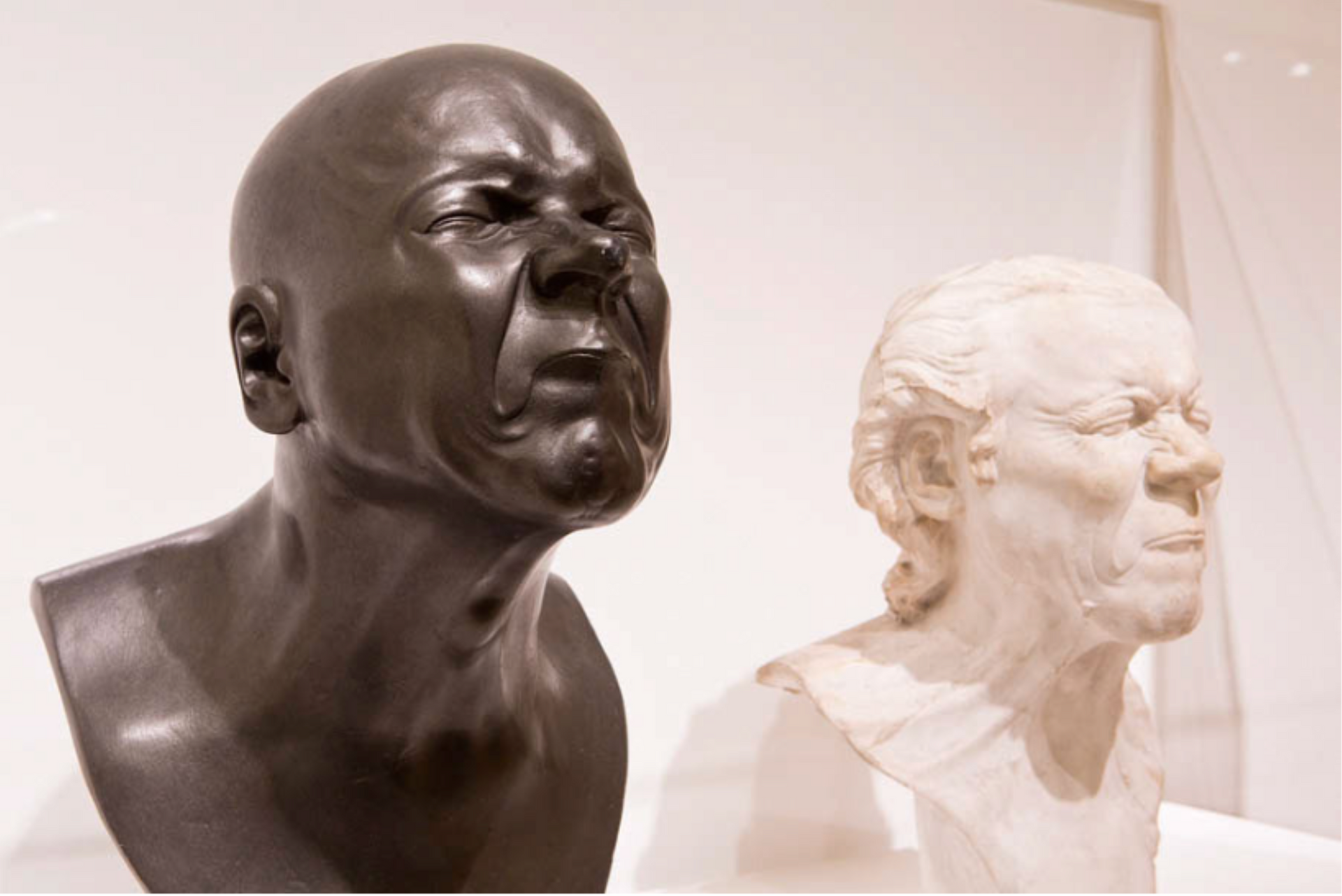
The Grotesque Factor
22/10/2012
What is the grotesque in art? At times it has been described as the exaggerated, on occasion compared to the deformed, and at others to the satirical or even the incongruous. Museo Picasso Málaga takes a close look at the subject in The Grotesque Factor, an exhibition that examines the meaning and evolution of this category of aesthetics at various points in Western art history.
·";" Leonardo da Vinci, Francisco de Goya, James Ensor, Paul Klee, Pablo Picasso, Otto Dix, Willem de Kooning and Francis Bacon are just a few of the 74 international artists who created the more than 270 works brought together for the occasion. The works are technically and formally diverse and are seen on display together here for the first time. They all feature an element of the grotesque, which has been defined in this exhibition as an artist&rsquo";"s view of the world, a mindset that has been expressed in very different ways over the years.
·";" The exhibition, which will be on show from 22 October 2012 to 10 February 2013, is enhanced by film screenings, a book and a full programme of cultural and educational activities: seminars, children&rsquo";"s theatre, guided tours and special open days have all been scheduled over the next few months at Museo Picasso Málaga.
Artworks and literary works from all over Europe and America have been gathered together for The Grotesque Factor, an exhibition that has been devised as a journey through the complex areas of what is known, in terms of art and aesthetic taste, as the grotesque. The exhibition confronts the semantic and cultural ambiguity of the object examined in it and accepts its heterogeneous nature, in which disdain and piety, laughter and grief, empathy and derision, tenderness and fright, abruptly come together. Ultimately, it both rejects and embraces what we are.
The exhibition follows three different paths of genesis and maturity. Three cultural &ldquo";“versions&rdquo”;" of the grotesque: one that is defined in certain forms of ornamentation";" one that leans out over the abyss, to show us that there is nothing there to hold us up";" and one that uses laughter to fight the foolishness of all things human.
The ornamental form of the grotesque has the honour of being the one that lends its name to this realm of modern sensibility. The tale of its origins dates back to the late 15th century, under the streets of Rome, where the walls of Nero&rsquo";"s first-century Domus Aurea were discovered, in grotto-like formations. The walls contain weightless images of hybrid creatures and implausible architectural compositions. It was after this discovery that the Pompeian style gradually spread through the whole of Europe, through its countries and down the centuries.
The second branch of the grotesque family tree takes us to the vertiginous edge of meaninglessness, from Brueghel, to the Symbolists and the Dada movement. This tradition has interspersed needs that have been satisfied for Western humanity by Carnival, masquerade, cross-dressing or the game of Truth or Lie. This abyss-like form of the grotesque reveals to us, with a roar of laughter, that there is nothing left to protect us, that we are merely the children of Prometheus, confronted by a void.
The comic grotesque has more of a social and moral bias. Here, one comes across comedy and satire, as well as modern variations of social humour such as caricature or the longstanding tradition of burlesque, which was to culminate in the silent movies of the early twentieth-century comedians. Today, the grotesque continues to permeate every layer of human society. It may be said to touch everything, rendering it vulgar or ridiculous. Here on the edge of the twenty-first century it would seem that, more than ever before, the grotesque has reached its highest peaks &ndash";" and we are falling from them every day.
The Grotesque Factor shows over 270 paintings, sculptures, drawings, engravings, books, documents and fragments of film have been gathered together for this exhibition. Works by 74 outstanding artists, who include Francis Bacon, Louise Bourgeois, Otto Dix, James Ensor, Max Ernst, José Gutiérrez Solana, Victor Hugo, Paul Klee, Willem de Kooning, Roy Lichtenstein, René Magritte, Man Ray, Franz Xaver Messerschmidt, Juan Muñoz, Meret Oppenheim, Pablo Picasso, Richard Prince, Juan Sánchez Cotán, Antonio Saura, Thomas Schü";"tte, Cindy Sherman, Leonardo da Vinci, Bill Viola and Franz West.
The exhibition is curated by José Lebrero Stals, artistic director of MPM. The academic advisor is Luis Puelles, professor of Aesthetics and Art Theory at the University of Malaga. This project has been made possible thanks to the loans and generosity of private collections and art galleries, and the close involvement of museums in Europe and America, such as The British Museum in London, Museo Belvedere in Vienna, Musée du Louvre in Paris, Museo Nacional del Prado in Madrid, The Museum of Modern Art in New York, and The Royal Collection and the Victoria &";" Albert Museum in London, amongst others.
Cinema and a catalogue Ever since it first began, cinema has included the grotesque (the burlesque) in its modern way of telling stories, and a number of directors have shared this idea. So in the exhibition rooms themselves, you can watch excerpts from the films The Bell Boy (1918, Buster Keaton and Fatty Arbuckle), The Hunchback of Notre Dame (1923, Wallace Worsley) and an excerpt from Bedlam (1946, Mark Robson), as well as some footage by Georges Méliè";"s.
Museo Picasso Málaga has also published in Spanish and English a catalogue for The Grotesque Factor, with José Lebrero Stals as coordinating editor. The book contains texts by Valeriano Bozal, professor of Art History at Madrid Complutense University";" Martin Clayton, senior conservator of the Department of Prints and Drawings at The Royal Collection";" Frances S. Connelly, professor of Art History at the University of Missouri";" Emmanuel Dreux, researcher and author of the book Le cinéma burlesque";" Werner Hofmann, professor and director emeritus of Hamburger Kunsthalle";" Michel Melot, librarian and art historian";" José Lebrero Stals, artistic director of MPM";" Luis Puelles, lecturer in Aesthetics and Arts Theory at Malaga University, and Xavier Tricot, author and painter. The catalogue can be ordered from the MPM Library: lalibreria@mpicassom.org.
Seminar. What is the grotesque in art? After the official opening of the exhibition, Tuesday 23 October will see the start of the seminar What is the Grotesque in Art? which will take place until Friday, 26 October. The seminar will examine the diverse range of this aesthetic category in four separate sessions that will be held at 7.00 pm in the MPM Auditorium. For those who wish to obtain a certificate, both registration and attendance are compulsory. For the general public, admission is free until all seats are taken.
23 October >";" The plurality of the category of the grotesque Inmaculada Abolafio, coordinator of The Grotesque Factor exhibition. Museo Picasso Málaga Luis Puelles, lecturer in Aesthetics and Arts Theory. Universidad de Málaga. Xavier Tricot, author and painter, author of James Ensor&rsquo";"s catalogue raisoné.
24 October >";" Satire and Social Criticism Valeriano Bozal, professor of Art History, Universidad Complutense de Madrid Frances Connelly, professor of Art History. University of Missouri.
25 October >";" Caricature as a Strategy Prof. Dr. Werner Hofmann, professor and director emeritus of Hamburger Kunsthalle
26 October >";" The Origins of Cinema and the Grotesque Antonio Meliveo, musician, film director and producer. Antonio Soler, author.
In addition, in the month of January 2013, the Museo Picasso Málaga will be organising a new seminar which will explore the caricature, and which will be directed by Luis Puelles. So, alongside his work as academic consultant for the exhibition, he will be looking at the work of William Hogarth, Honoré Daumier and George Grosz in three master classes.
Cultural and Educational Activities The Grotesque Factor exhibition will also be the central theme of many of the educational and cultural activities that MPM has scheduled over the next few months. For this reason, the works on display will be the main subject of Gallery Talks, the guided tours that take place at MPM every Thursday at 6pm.
Coinciding with the celebration of the 9th Anniversary of Museo Picasso Málaga, on Saturday 27 October the gallery has organized an open day so that visitors can view both the MPM collection and The Grotesque Factor exhibition. There will be activities for families and adults throughout the day, as well as archaeological trails, architectural walks and music, to commemorate the MPM&rsquo";"s ten years of life.
The exhibition will also tie in with the storyline of the sixth season of theatre for families, Children at the Picasso. A Boxful of Surprises. And on 22nd December, Family Day, there will be workshops, tours, music and storytellers, all centred on the theme of the exhibition and enabling visitors to discover the technical diversity of work by artists from all periods who all share the grotesque factor. And with the arrival of the Christmas holidays, the holiday workshops will take advantage of the fact that The Grotesque Factor exhibition includes work by artists such as Francisco de Goya, Leonardo Da Vinci and James Ensor, to work with the youngsters taking part.
The Grotesque Factor Museo Picasso Málaga Dates: 22nd October 2012 &ndash";" 10th February 2013 Price: 4.5 &euro";" exhibition / 9 &euro";" exhibition + MPM Collection. Discounts available. Publications: Catalogue and leaflet. www.museopicassomalaga.org
More info and images: comunicacion@mpicassom.org
Related Exhibition

The Grotesque Factor